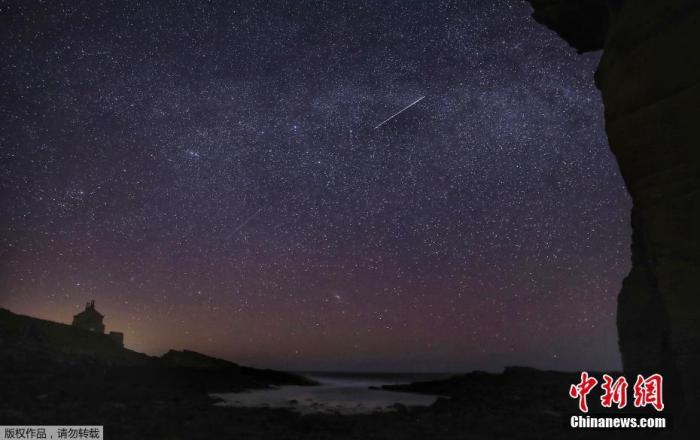Data map: Lyra meteor shower.
China News Service, Nanjing, April 21 (Yang Yanci) According to the Purple Mountain Observatory of the Chinese Academy of Sciences on the 21st, the Lyra meteor shower is about to "come sweetly."
On April 22, Beijing time, the meteor shower will "go to the appointment" as scheduled, and "bloom" greatly in the northern hemisphere.
According to Hu Fanghao, an engineer at the Purple Mountain Observatory of the Chinese Academy of Sciences, the parent body of the Lyrae meteor shower is the long-period comet C/1861 G1 Sheqier.
The dust strips scattered during the eruption of this comet "touched" the earth, and the "gifts" left behind formed a meteor shower.
Lyra is one of the most brilliant constellations in the northern galaxy, named after the lyre shaped like the ancient Greek lyre.
It is worth mentioning that the Lyra meteor shower has an observation history of more than 2,600 years, and the earliest known record can be traced back to 687 BC.
In "Turn Left", "April Xinmao night, the stars are missing, and the stars fall like rain in the night", which is recorded as the Lyra meteor shower.
According to Hu Fanghao, the Lyrae meteor shower is a "periodical meteor shower", which recurs on roughly the same days in each calendar year.
Usually, its active period is between April 14th and April 30th.
At 20:40 on April 22, Beijing time, the maximum period of the Lyrae meteor shower will be ushered in.
At that time, the zenith meteor occurrence rate per hour (ZHR) can reach about 18.
If the weather is fine, the public is expected to "receive" the "gift of the comet" in the April sky at night.
However, the day is the eleventh month of March in the lunar calendar, because when it is close to the full moon of the fifteenth lunar month, it will be disturbed by moonlight in the first half of the night.
Experts suggest that after the moon sets in the second half of the night, the radiant of the Lyra meteor shower will have nearly one hour to reach the sky. By then, the radiant horizon will reach 84 degrees, which is almost a positive zenith, and the observation conditions will be better than in the first half of the night.
Compared with other famous meteor showers, Lyrae has many bright meteors and many fire meteors, but the flow is not large, so be patient when observing.
"In history, there have been large-scale outbursts of the Lyra meteor shower, such as 90 per hour in 1982. But in recent years, it has fallen into silence, and its ZHR has hovered between 14 and 23 in most years." Hu Fanghao said. .
(Finish)

